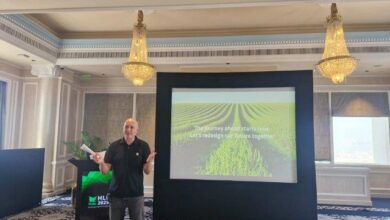Nanotechnologies based on natural materials to enhance storability, quality and safety of agricultural food products

dr. elena poverenov*
institute of postharvest and food sciences, agricultural research organization, thevolcani center, rishonlezion, 7505101, israel.
*correspondence
dr. elena poverenov
department of food quality and safety, agricultural research organization, the volcani center, rishonlezion 7505101,israel.phone: (+) 972-50-6220070, fax: (+) 972-3-9683692. e-mail: elenap@volcani.agri.gov.il
abstract
natural materials-based active films and coatings attract much interest as an efficient and safe approach for the enhancement of quality and shelf-life of agricultural food products. advanced edible films and coatings can also serve as a matrix for the delivery of active agents such as natural antioxidants and antimicrobials, nutritional agents and natural flavor or aroma compounds. for this purpose, nanotechnology-based approaches can be exploited. this paper describes the formation of active edible films and coatings utilizing different nanotechnology methods such as nanoemulsions, nanoparticles, and layer-by-layer techniques.
the article
edible films and coatings based on natural ingredients are used as covers, wraps, packages and coatings of agricultural food products to inhibit senescence processes, protect food from mechanical and microbial damages and decrease the disappearance of beneficial food components. edible films and coatings forming components can be classified into three natural material-based groups: (1) lipids, (2) proteins, and (3) polysaccharides. in addition, the film or coating matrix can be a composite, based on a combination of several materials.
in recent years, novel nanotechnology techniques have begun being exploited in the edible films and coatings research field. nanotechnology is a multidisciplinary technological and scientific field that undergoes rapid development. size reduction to the nanometer scale (10-9 m) may fundamentally enhance a compound’s physical, chemical and biological properties resulting in a new application potential. the potential benefits of nanomaterials in the food industry are tremendous and cover many aspects such as food safety, nanosensors, nutrients delivery systems, bioavailability, new materials for pathogen detection and packaging materials. utilizing advanced nanotechnological approaches, edible films and coatings can improve their above-mentioned properties and also serve as a matrix for agents that have beneficial activity.
incorporation into edible films and coatings carrying matrices, effectively protects the active compounds from undesired interactions and helps to control and maintain their bioactivity and efficacy. it is important to note that all additives incorporated into edible films and coatings should be edible and generally recognized as safe. there are many types of active compounds that can be introduced to the edible films and coatings (figure 1). natural antimicrobial agents can be added as a green alternative to preservation compounds that enable the protection of agricultural products from harmful microorganisms, such as bacteria, fungi and yeast. nature sourced-antioxidants that can also be added to the edible coating matrix can provide double profit by prolonging storability of the food products and enhancing their nutritional quality for consumers, since antioxidants have numerous health benefits. additional nutraceutics (nature- sourced compounds with health promoting properties) such as nutrients, vitamins and minerals can be also added to the coating matrix.
figure 1.beneficial active agents that can be incorporated into the edible coating matrix.
in this article, we will refer to a specific nanotechnological approach named layer-by-layer technique which was used to form advanced active edible coatings, and will demonstrate the effect that such coatings have on quality and storability of agricultural food products. the layer-by-layer (lbl) technique originates from materials science and is based on the alternate deposition of various polymers to produce multilayers with controlled properties. due to a nanometer scale buildup, this approach facilitates a delicate and precise tuning of the materials’ features. frequently such lbl materials consist of oppositely charged polyelectrolytes and are applied by utilizing the electrostatic deposition method (figure 2).
figure 2. schematic representation of layer by layer edible coatings
the lbl approach has entered the field of food nanotechnology relatively recently. the multilayered edible films and coatings were applied on agricultural products and included various active agents that result in significant improvement of the products quality. our group developed several types of polysaccharide-based lbl edible coatings and films and applied them on fresh and fresh-cut agricultural products, such as mandarins, oranges, fresh-cut melons and more. the lbl formulations allowed for the coatings to gain the individual advantages from all comprising polymers. for instance, the application of edible coatings to minimally processed fruit faces a technical problem related to the difficult adhesion (attachment) of materials to the cut fruit’s hydrophilic (wet) surface. the lbl coating, which is based on two edible polysaccharides, namely alginate and chitosan, was applied. the quality of melons coated by these lbl coatings was compared to the quality of melons coated by single layer alginate or chitosan coatings and to the non-coated control fruits. the lbl coating was found to possess beneficial properties of both components of the layers. the lbl coating of melons provides antimicrobial protection through the chitosan layer and texture-enhancement properties through the alginate layer (figure 3). the lbl coating provided melons with good firmness and microbial safety and as a result, enhanced quality and shelf life extension.
figure 3.fresh-cut melons after 14 days of storage at 6oc(left). firmness of fresh-cut melons during 14 days of storage at 6oc(right).
conclusions and future perspective
utilizing advanced nanotechnology approaches in the relatively new research field, active edible films and coatings, are attractive from both a fundamental scientific and applied point of view. thus, the nanotechnology methods allow for a rational design of active edible films and coatings and may have clear benefits with regard to food products’ quality and safety.
acknowledgments
we would like to gratefully acknowledge the chief scientist of the israeli ministry of agriculture for financial support. we would like to thankour collaborators, dr. ron porat, dr. victor rodov and prof. eli fallik and phd studenthadar arnon-rips who worked with us on active edible coatings projects.




